Film Evaluations
Table of Contents
- Ilford FP4 plus
- Ilford HP5 plus
- AgfaPhoto APX 400
- Kodak Double-X (5222)
- Ilford Delta 3200
- How to read the charts
Methodology
I’ve written a detailed account of my methodology here. I created an idealized digital test target with zones from (roughly) 0 to X, in one-step increments. I then meter on Zone V with a Pentax Spotmeter V, and shoot several frames around the exposure index (EI) I think is the correct match for the development time (typically, box speed and the development time indicated in the datasheet or the Massive Dev Chart for the box speed). I then evaluate the speed and contrast of each shot at that level of development to decide how I would rate the film.
Ilford FP4 plus
Summary
Easily my favorite film, FP4 plus shows very fine grain, good contrast, and a lot of latitude. It also pushes well up to EI 500.
Development +2
ISO 125
This is really the limit for FP4+. At EI 500, we see very high contrast (𝛾=1.85), with a significant (2 stops) loss of shadow detail, and perhaps some loss of highlight detail—the dynamic range of the film has been reduced to about 7–8 stops. If you like the combination of fine grain with crunchy contrast—and I do—then this is an acceptable loss. If you need full dynamic range and smooth tonality, look elsewhere. That said, the images I’ve made at EI 500 don’t feel like they’ve lost so much shadow detail, but that is likely very subjective.
The shot at EI 125 makes very clear that this is an ISO 125 film.
Development
Push/Pull: +2
Developer: Adox XT-3
Dilution: 1+1
Temperature: 20º
Time: 14'30"
Agitation: intermittent
Notes: Sent through the carry-on X-ray machine at LIS airport.
Digital Characteristic Chart
Test Targets



Left to Right: Metered @ ISO 125, 250, 500
Ilford HP5 plus
Development +0
ISO 400
Development
Push/Pull: +0
Developer: Adox XT-3
Dilution: 1+1
Temperature: 22,9º
Time: 8'58"
Agitation: intermittent
Digital Characteristic Chart
Test Targets

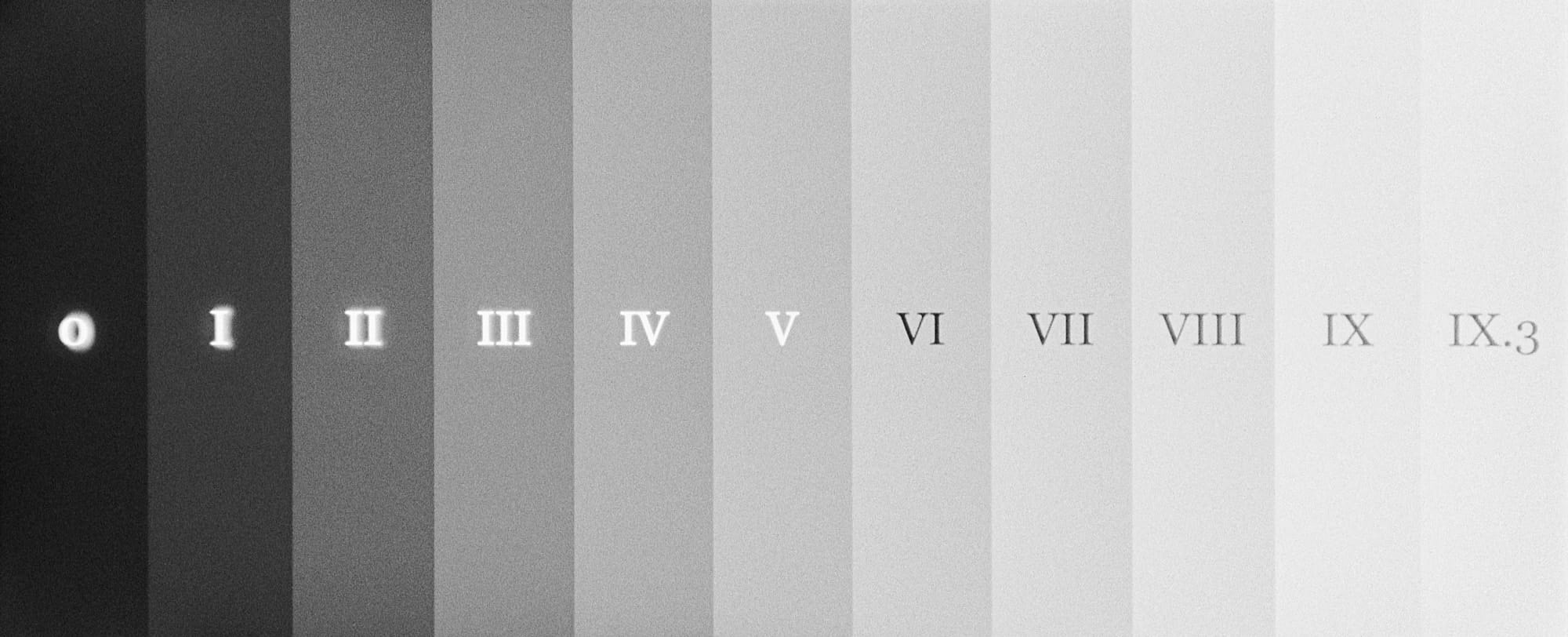

ISO 100, 200, 400
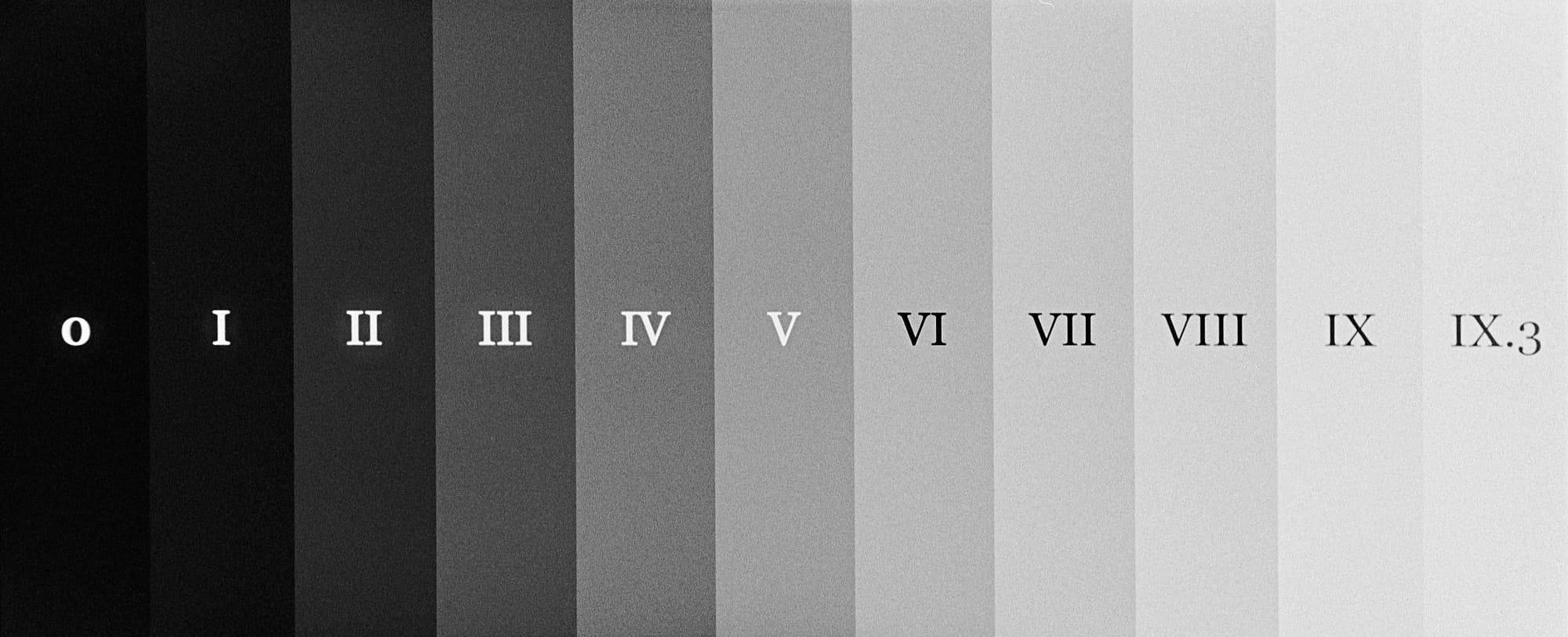


ISO 800, 1600, 3200
AgfaPhoto APX 400
Summary
This is a weird film, but I like it. Part of what makes it weird is I can’t find an official source for the datasheets, I’ve had to revert to third-party sources for the information. I think it is nominally an ISO 320 film, or anyway AgfaPhoto recommends treating it as such in some developers. For me, it’s faster than it says, which is curious.
Development +0
ISO 800
Given my development technique, I can easily rate this film at ISO 800 without additional development time. So, I meter at EI 800, but develop according to the time for EI 400. At 800, we see slightly increased contrast (𝛾=1.15), with nice definition in the highlights, and just a slight loss of the darkest shadow details.
Development
Push/Pull: +0
Developer: Adox XT-3
Dilution: 1+1
Temperature: 20º
Time: 12'
Agitation: intermittent
Digital Characteristic Chart
Test Targets



Left to Right: Metered @ ISO 200, 400, 800
Development +1
ISO 1000?
With only a single stop push in development, I can shoot this film at 1600, or anyway very close to it. So, I meter at EI 1600, but develop according to the time for EI 800. At 1600, we see notably increased contrast (𝛾=1.55), but still with good definition in the highlights, and about one stop of loss of the darkest shadow details.
(Unsurprisingly, the shot at EI 800 has improved shadow detail vs. +0 development above.)
Development
Push/Pull: +1
Developer: Adox XT-3
Dilution: 1+1
Temperature: 22,1º (It’s summer in Lisboa…)
Time: 11'45"
Agitation: intermittent
Digital Characteristic Chart
Test Targets


ISO 400, ISO 800

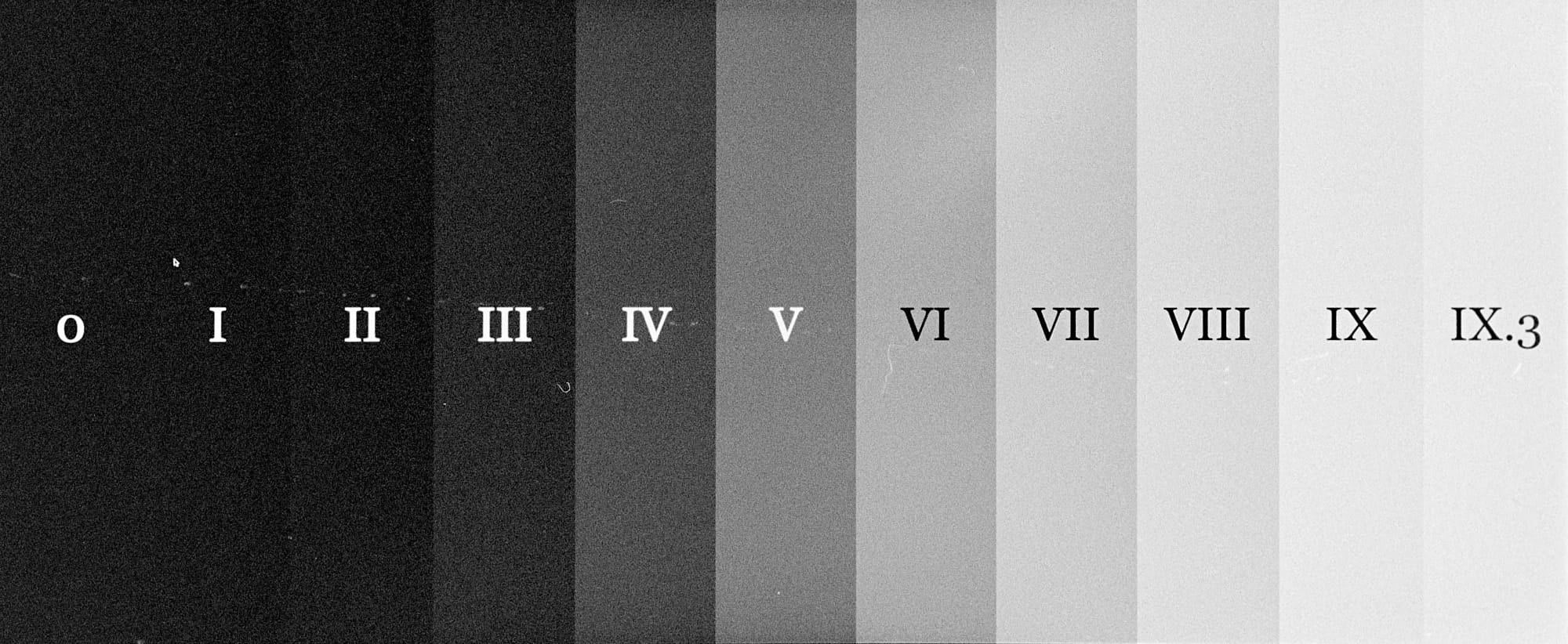
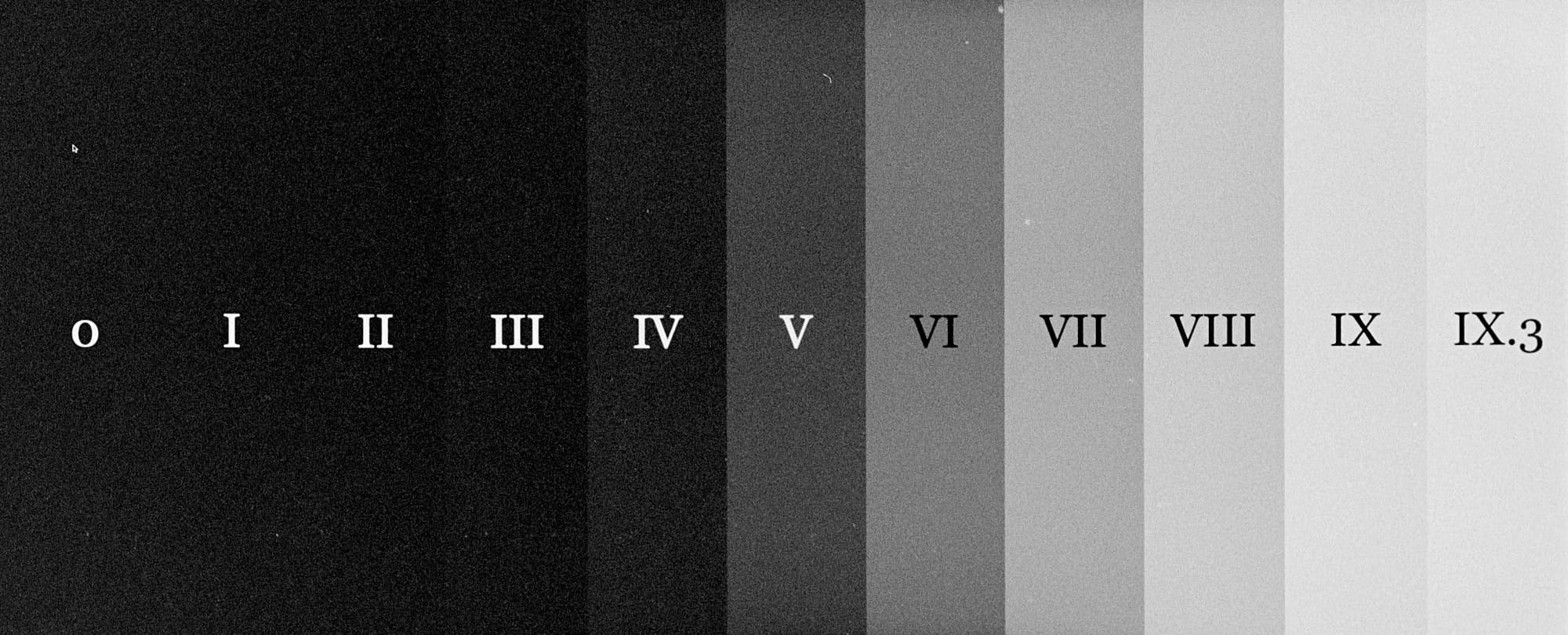
ISO 3200, ISO 6400
Kodak Double-X (5222)
Summary
Nominally an ISO 250 film, Kodak informs us it can be shot from ISO 50 to 1600 with suitable adjustment in development.
Development +0
ISO 500
Initial experiments reveal that I would rate this film at ISO 500 with normal development. It shows good tonal separation in the midtones (𝛾=0.99) at EI 500 with lots of room for shadow detail, but the highlights can be flat.
Development
Push/Pull: +0
Developer: Adox XT-3
Dilution: 1+1
Temperature: 20º
Time: 10'
Agitation: intermittent
Digital Characteristic Chart
Test Targets
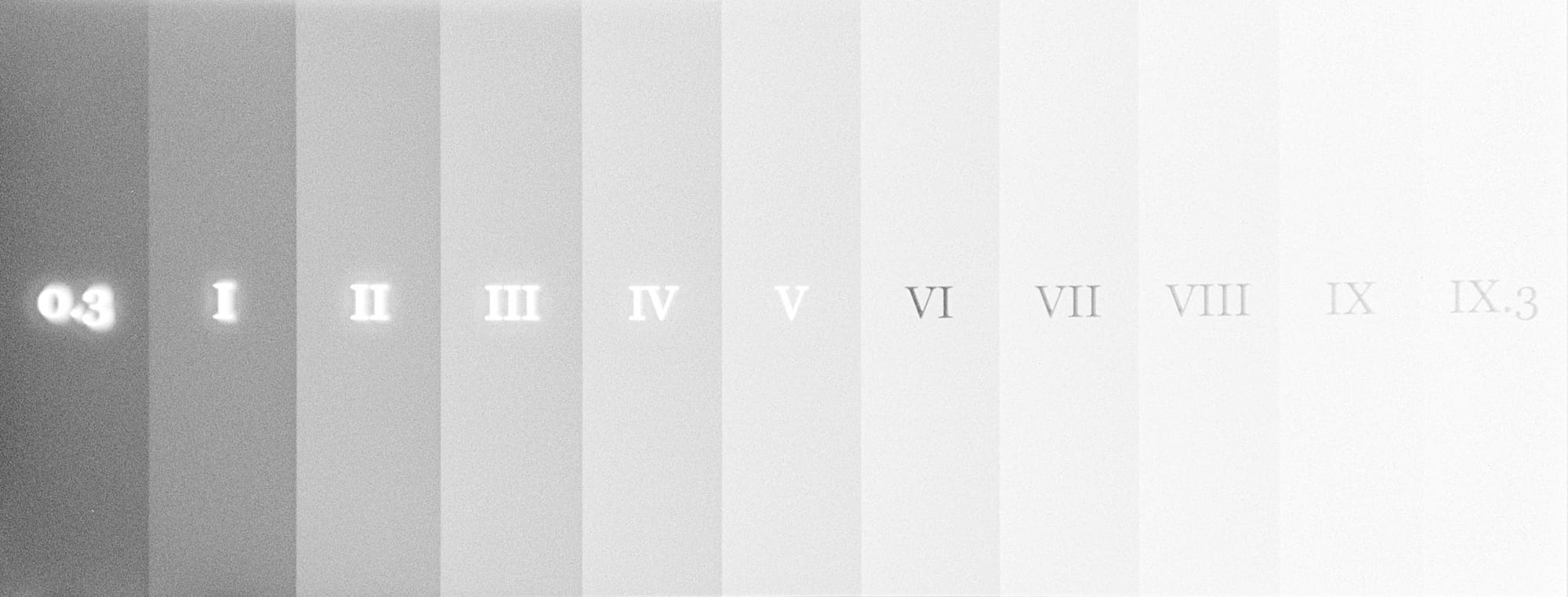
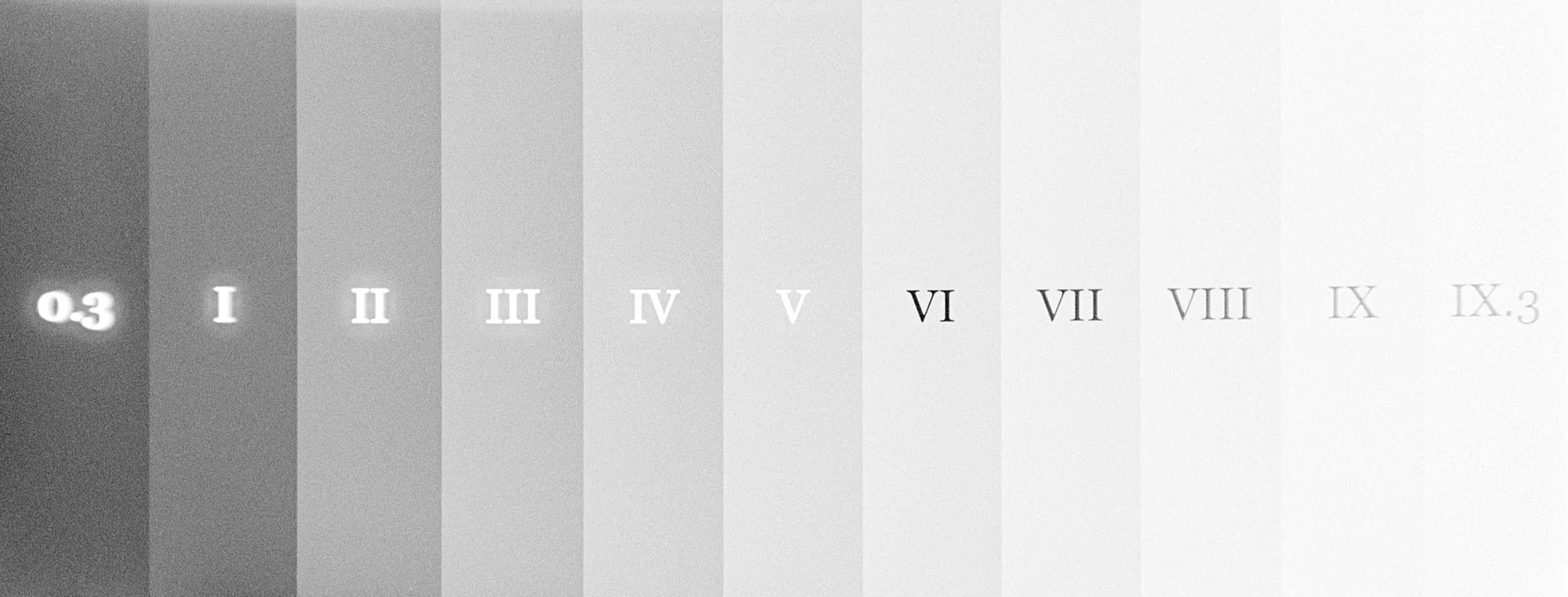
ISO 75, ISO 125
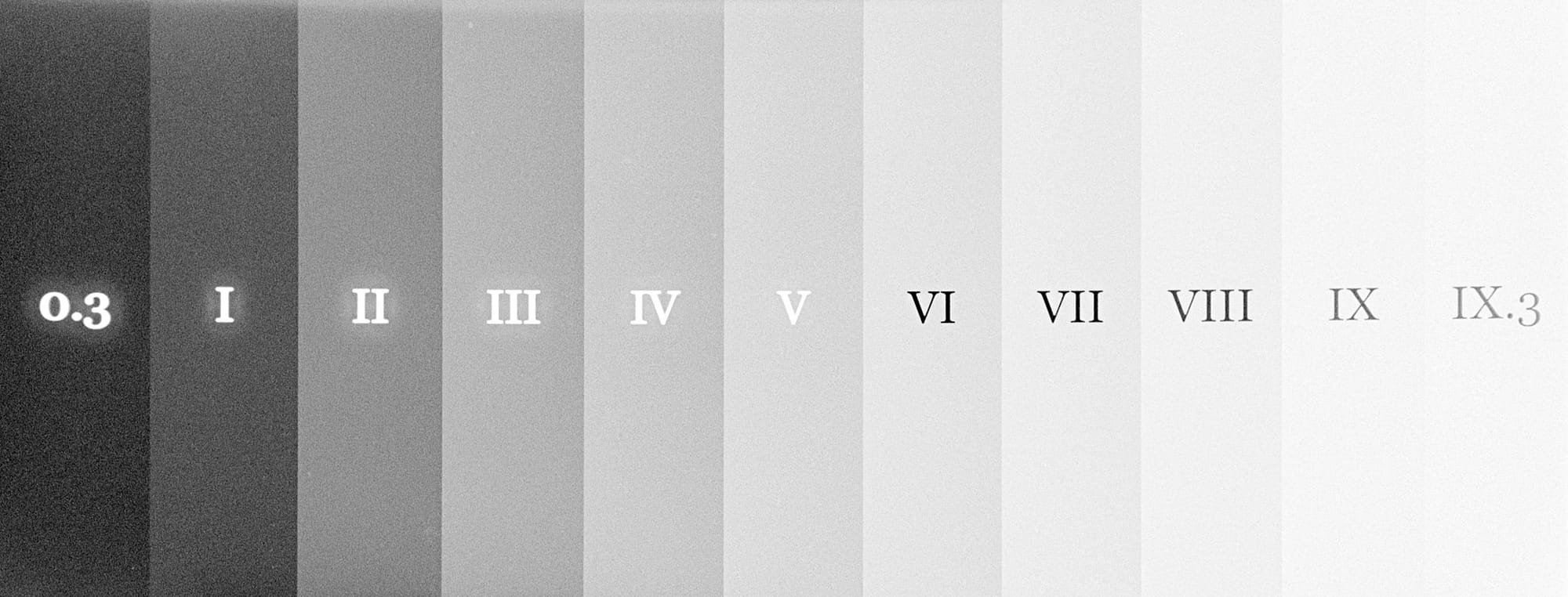
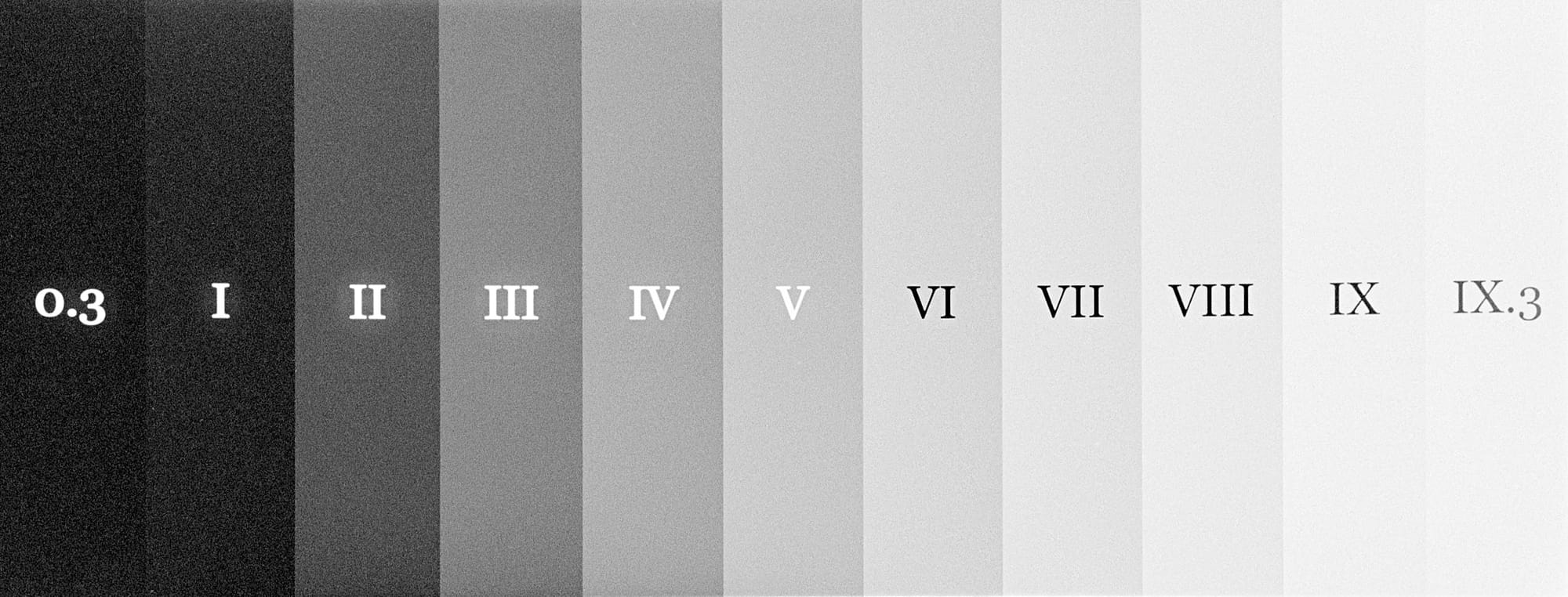
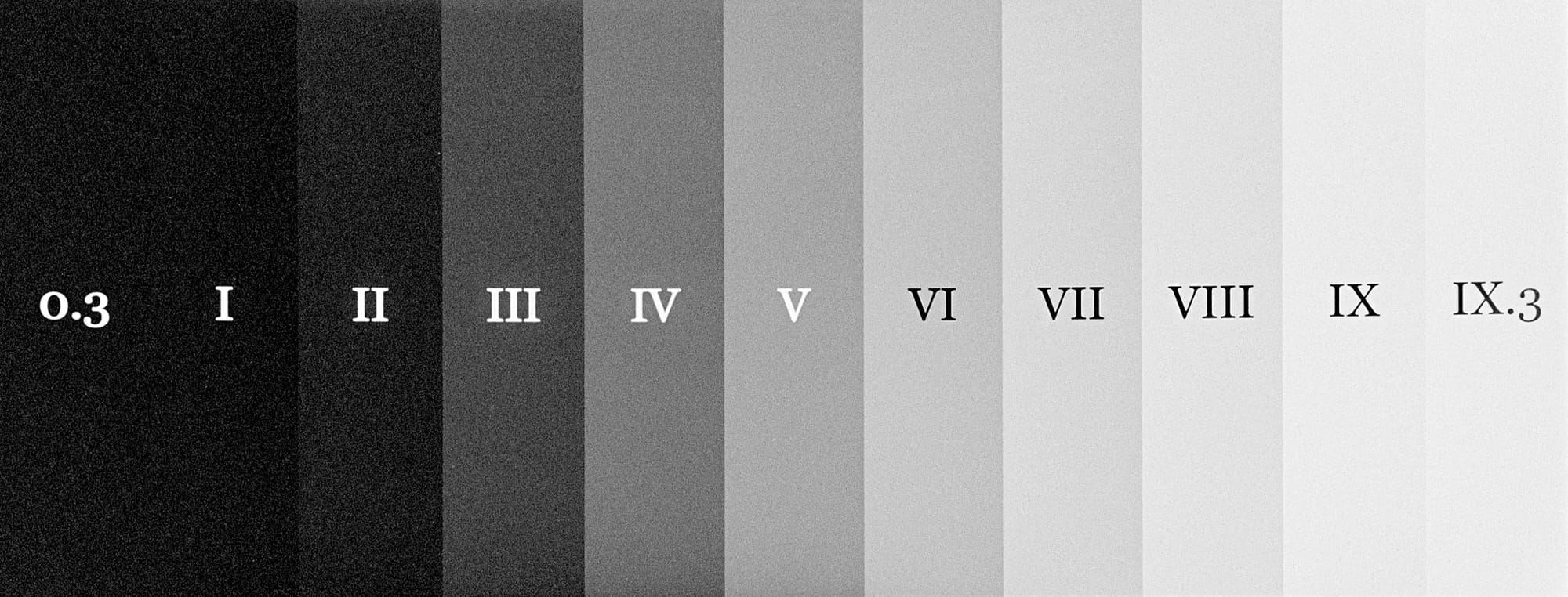
ISO 500, ISO 1000
Development +1
ISO 500
Although the test above suggests that I could shoot Double-X at EI 500 with normal development, I thought I should see what happens if I push the development a stop. And I thought too I would see if we can find anything interesting rating the film even faster.
The results are not very different from regular development. The shadows are a bit darker, but still plenty of detail up to EI 500, and with maybe better highlight separation. I’m actually seeing less contrast in the midtones (𝛾 = 0.81), which is the opposite of what you would expect.
Beyond EI 1000, there is almost no shadow detail, however—it remains to be seen if additional development can pull more detail out, I’ll have to experiment!
Development
Push/Pull: +1
Developer: Adox XT-3
Dilution: 1+1
Temperature: 22,3º (It’s summer in Portugal!)
Time: 9'45"
Agitation: intermittent
Digital Characteristic Chart
Test Targets


ISO 250, ISO 500



ISO 2000, ISO 4000
Ilford Delta 3200
Summary
Nominally an ISO 3200 film, but actually an ISO 1000 film, Ilford recommends exposing between EI 1600 and EI 6400 (presumably adjusting development). The grain is prominent but it’s not nearly as grainy as I would have expected. Contrast is high, but balanced with good tonal separation through the midtones.
Development +0
ISO 1600
Initial experiments reveal that I would rate this film at ISO 1600 with normal development, but this should hardly be surprising. It shows strong tonal separation in the midtones (𝛾=1.62) at EI 3200, but there is a one-stop loss in shadow detail, with Zones 0 and I being essentially indistinguishable.
The shot at EI 1600 shows a more neutral contrast (𝛾=1.15), good shadow detail, but the highlights are a bit muddy.
Development
Push/Pull: +0
Developer: Adox XT-3
Dilution: 1+1
Temperature: 24º (It’s summer in Portugal)
Time: 15'48"
Agitation: intermittent
Digital Characteristic Chart
Test Targets
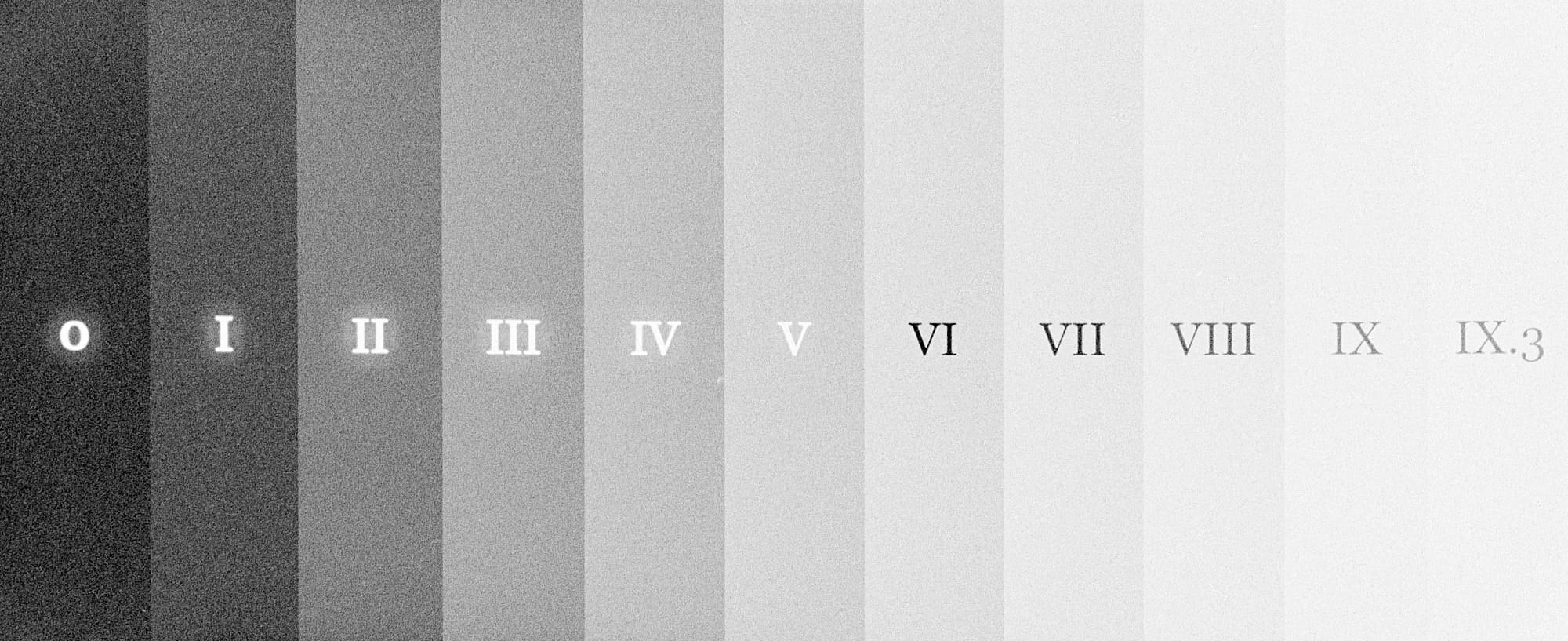

EI 800, 1600
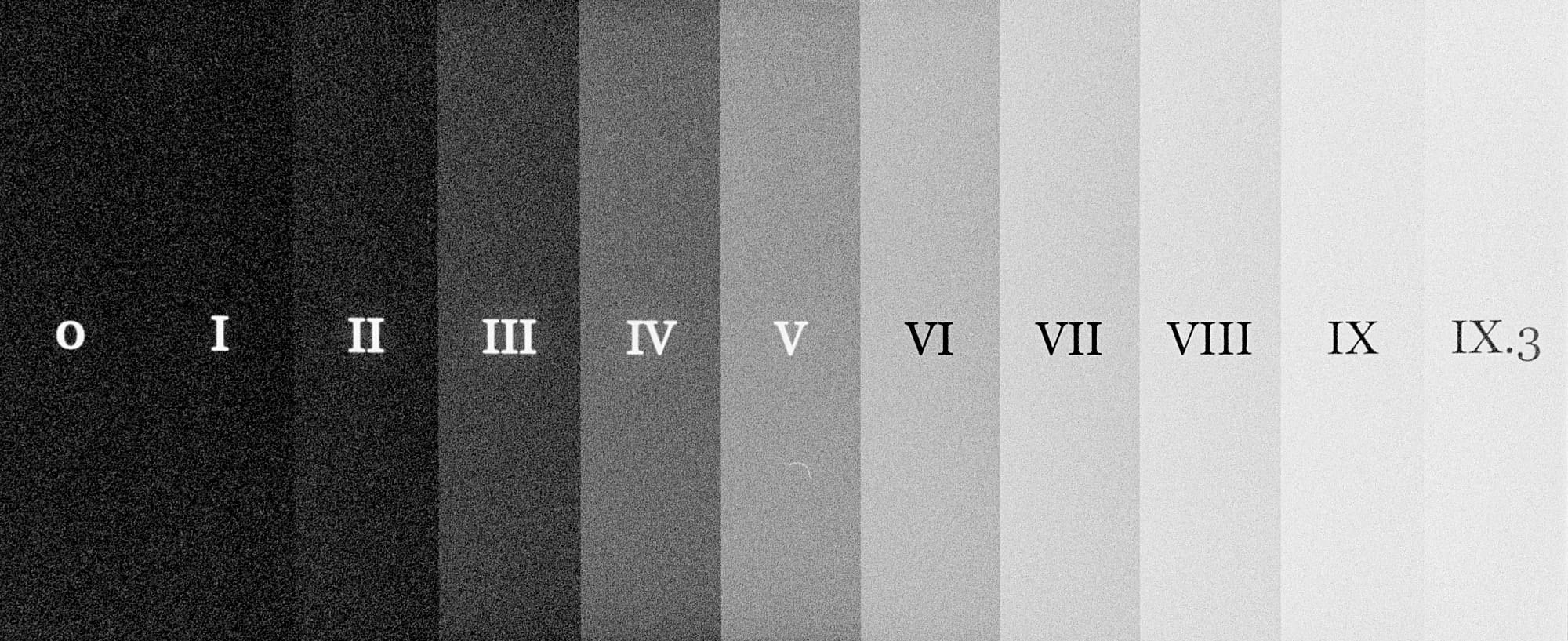

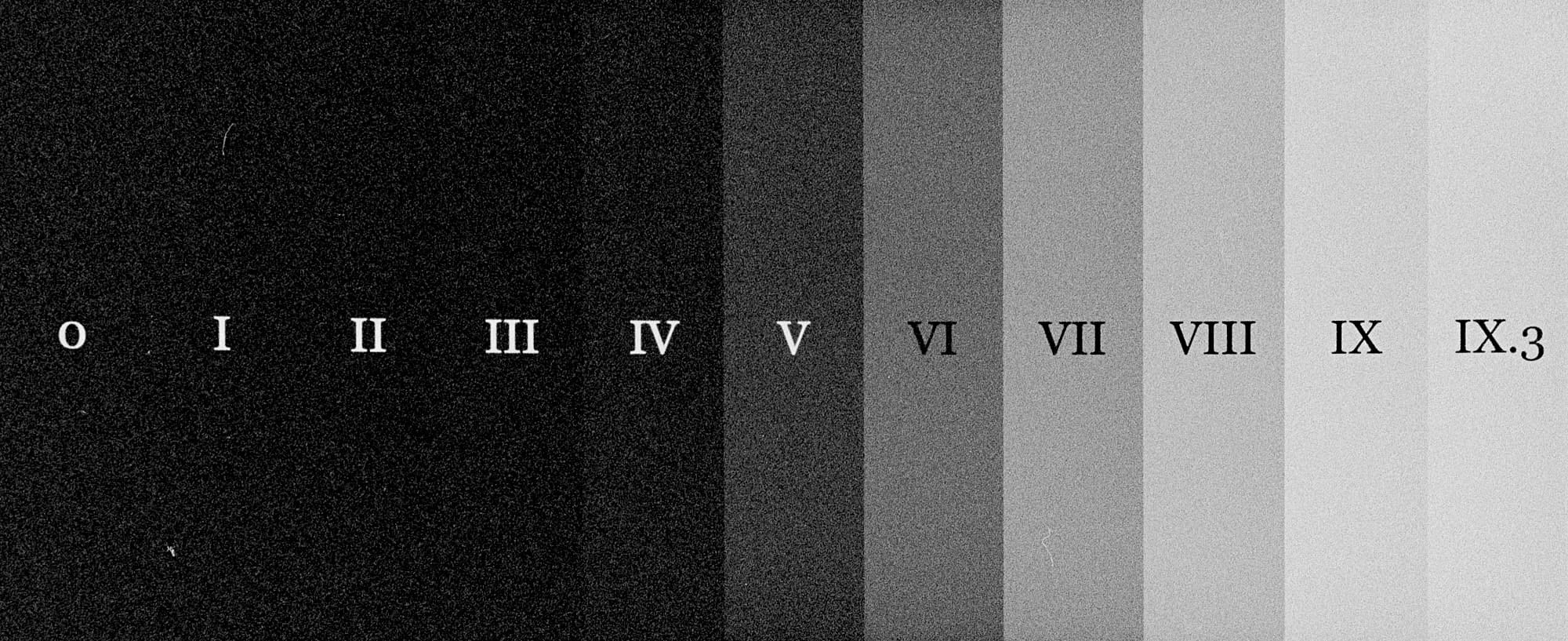
EI 6400, ISO 12800
How to read the charts
Here is a sample digital characteristic curve chart showing how a fictional film responds to light.
Along the X-axis we have a measure of the brightness of an object using the Zone System, with Zone V representing an object metered as medium gray. Each zone is one stop brighter than the zone to it’s left, and one stop darker than the zone to it’s right.
Along the Y-axis is the film’s response to object brightness (inverted in the case of negative film) on my computer screen, with 0 representing darkest black and 255 representing absolute white.
The chart relates how a transparent a film is versus the brightness of the object being recorded. It has three interesting parts.
The toe is the part of the chart from about Zone 0 to Zone III—the shadows.
- How dark does the film get? If it doesn’t get very dark, then maybe we have overexposed the film.
- Is there a clear change from zone to zone? If there isn’t then maybe we have underexposed the film.
- How steep is the line? The steeper the line, the more contrasty the shadows are, and the better the film’s ability to distinguish shadow details.
The shoulder is the part of the chart from about Zone VII to Zone X—the highlights.
- How flat is the curve here? The flatter the curve, the less highlight detail will be recorded.
- Where does the curve begin to really flatten? This represents the maximum brightness the film can record, and is the point at which we can estimate the overall dynamic range of the film (the maximum number of stops that can be recorded). Most film will show 8–10 stops of dynamic range, that is, will flatten severely between Zone VIII or Zone X.
The straight-line portion is the part where most of a photo’s detail lies, representing middle tones between about Zone III and Zone VII.
- How steep is the curve here? This is generally where we rate a film’s overall contrast, because this is where we will notice it most. The slope of the curve here is called the gamma (𝛾), and is measured in the series labels for the chart.
On interpreting gamma. Because we are looking at a computer display’s rendering of film, rather than measuring it with a densitometer directly, the gamma values here have no real relationship to what’s printed in the datasheet for a given film. Instead, I’ve chosen to normalize the values so that a gamma of 1.0 precisely matches the gamma of my display. 𝛾 > 1.0 represent films with a higher contrast than my display, and 𝛾 < 1.0 represent films with a lower contrast than my display.
Put slightly differently, we might classify films with a 𝛾 > 1.0 as high contrast, and those with 𝛾 < 1.0 as low contrast. But this classification is arbitrary and subjective. Use your own judgment!